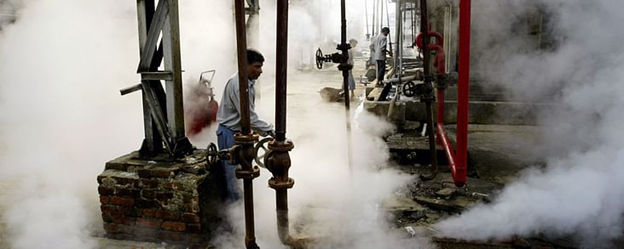Context
Recently, the Prime Minister of India announced that India has achieved its target of blending 10% sugarcane-extracted ethanol in petrol, ahead of schedule.

About Ethanol
- It is an agricultural by-product which is mainly obtained from the processing of sugar from sugarcane, but also from other sources such as rice husk or maize.
- Ethanol is an organic chemical compound.
- It is simple alcohol with the chemical formula C2H6O.
- It is a volatile, flammable, colourless liquid with a characteristic wine-like odour and pungent taste.
- Ethanol can be produced from crops that have high starch content like sugarcane, maize, wheat, etc.
- In India, ethanol is mainly produced from sugarcane molasses by the fermentation process.
- Ethanol can be mixed with gasoline to form different blends.
What is Ethanol Blending?
- The ethanol blending is the process of mixing petrol with ethanol.
- The mixture is called Ethanol Fuel / Gasohol which is considered as a quasi-renewable energy.
- Ethanol is a biofuel derived from Sugarcane molasses (a by-product in the conversion of sugarcane to sugar), corn, sorghum etc.
- In India, the practice of blending ethanol was started in 2001.
- Ethanol blending for the first time was mentioned in the Auto fuel policy of 2003.
- Later, the National Policy on Bio-fuels, 2009 made it mandatory for oil companies to sell petrol blended with at least 5% of ethanol.
- Distilleries
- Sugar cane would likely continue to be the primary source for ethanol even with the 12 planned farm waste — or 2G ethanol — distilleries.
- The first, inaugurated in Aug 2022, has a capacity to produce 100 kilo litres a day, or 3.65 crore litres a year.
- Amount of Ethanol needed to reach the target-
- The 2021 Ethanol Roadmap forecasts that an additional 800 crore litres of ethanol is needed annually to meet the target.
- Assuming the other 11 planned farm waste distilleries have similar rates of production, their combined input would barely produce 5% of the additional annual ethanol requirement.
Current usage and target achieved
- Currently, 10% of the petrol that powers the vehicle is ethanol.
- Though India has had an E10 — or 10% ethanol as policy for a while, it is only this year that we have achieved that proportion.
New target
- India’s aim is to increase this ratio to 20% originally by 2030 but in 2021, when NITI Aayog put out the ethanol roadmap, that deadline was advanced to 2025.
